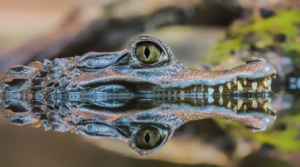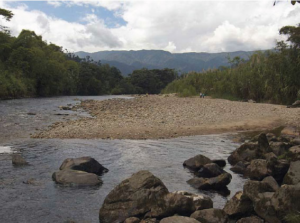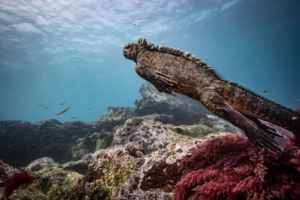The Antisana volcano, nestled in the Eastern Andes range, stands as a majestic and enigmatic wonder. The area protected by the Antisana National Park encompasses high-altitude wetlands and eastern Andean forests, forming a diverse habitat shaped by volcanic activity, glacier dynamics, and the forces of evolution. Its breathtaking landscapes and rich wildlife captivate visitors, while its strategic location provides vital water resources. One such resource is the Laguna de la Mica, which provides part of the water for the city of Quito.

Sistema Nacional de Àreas Protegidas, (2011)
In addition to the lagoon, there are swampy areas where water accumulates during the rainy season, forming seasonal lagoons such as Santa Lucia or Mauca Machay. The reserve is the origin of rivers that flow down the eastern slopes and into the Coca and Napo rivers. Moreover, the Tambo Valley boasts invigorating hot springs. With easily accessible routes from the capital and neighbouring regions, Antisana National Park has become a prime destination for nature enthusiasts and adventurers alike.
The Enigmatic Heart of the Reserve
Antisana Volcano takes centre stage within the reserve, exerting a profound influence on the landscapes of both the reserve itself and the neighbouring Cayambe-Coca National Park. The last known eruption, named the “Antisanilla explosion,” occurred in the Muertepungo caldera approximately 300 years ago and left lasting traces of lava flows visible along the ascent to Laguna de La Mica. The volcanic activity has also contributed to the formation of stone mines within the area. Furthermore, the region’s high-altitude grasslands boast unique plant formations with extensions of lichens resulting from mudflows or lahars, which occurred during past eruptions.

Ministerio de Turismo (s,f)
From Haciendas to Protected Areas
Before integration into the National System of Protected Areas, the high-altitude wetlands of Antisana were part of extensive haciendas dating back to the colonial era. Originally occupied by pre-Inca ethnic groups, these territories later became focal points for the textile industry. The sandy areas found in the flat parts of the high-altitude grasslands bear witness to the thousands of sheep that once grazed there. Presently, the reserve supports a diminished population of sheep, while cattle and wild horses provide sustenance for the Andean condor and other native wildlife. The surrounding communities have transitioned from extensive livestock farming to embracing agriculture, tourism, and research. In addition, the hydrology of the area now plays a crucial role in supplying water to the southern zone of Quito, thanks to the utilisation of resources from Laguna de la Mica.

Ecuador y Aventura (s,f)
A Haven for Biodiversity
The reserve’s biodiversity is truly remarkable, boasting 418 bird species, 73 mammal species, and 61 amphibian and reptile species. Notably, the reserve is home to the endangered Antisana harlequin toad, an endemic amphibian species characterised by its miniature brown appearance and habitat among the páramo rocks. Other charismatic creatures that roam the páramo include spectacled bears, mountain goats, white-tailed deer, dwarf deer, mountain tapirs, pumas, Andean cats, wolves, condors, caracaras, Andean seagulls, lizards, and guagsas.

Ministerio de Ambiente (2021)
Antisana Volcano (5,758 m)
With its expansive, snow-covered peaks, Antisana Volcano stands as one of Ecuador’s most magnificent and distinctive elevations. The surrounding páramo extends from the town of Píntag to the east of Quito, enveloping the volcano in a striking landscape that captivates visitors with its grandeur.

Planet Andes (2023)
Páramo de Almohadillas
Each of Ecuador’s volcanoes boasts distinct páramos. In the case of Antisana’s páramos, extensive cushion páramos dominate the landscape, characterised by small plants growing in dense colonies. Markedly, these plants create a microclimate that offers a slight warmth, contrasting with the typically cold surroundings. This unique phenomenon forms a “biothermal dome,” generating a constant flow of heat that protects the delicate roots and young stems of the vegetation.

Foto: Oscar Arroyo
Laguna La Mica
Laguna La Mica is a lake originally formed by glacial processes. It now serves as a reservoir after the construction of a dam by the Quito Municipal Drinking Water Company. This reservoir plays a crucial role in supplying water to a quarter of the capital’s population. As you marvel at the engineering feat of the dam, you’ll also witness nature’s wonders unfold before your eyes. Ducks, coots, and gallinules gracefully swim in the cold yet nourishing waters of the lagoon. The surroundings are a haven for various bird species, including gulls, ibises, bandurrias, and migratory birds like straight-billed sandpipers and long-legged plovers, which choose this tranquil sanctuary for nesting and resting during their migratory journeys.
Exploring Antisana National Park
Embarking on an adventure in Antisana National Park is an opportunity to immerse oneself in the splendour of untouched landscapes and encounter rare wildlife. As you traverse the reserve, you’ll be greeted by sweeping views of the magnificent Antisana Volcano and its snow-capped peaks. The diverse ecosystems within the park harbour a rich tapestry of life, from the enchanting páramos adorned with cushion plants to the crystal-clear waters of Laguna La Mica.

Foto: Oscar Arroyo (s,f)




